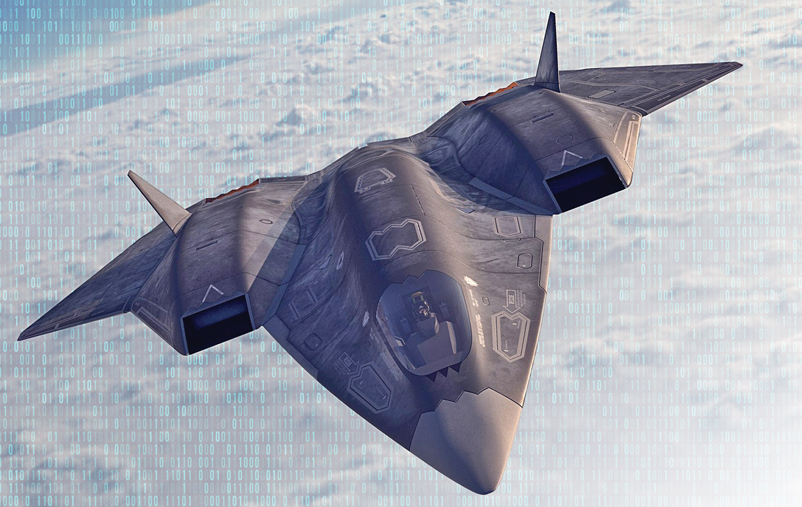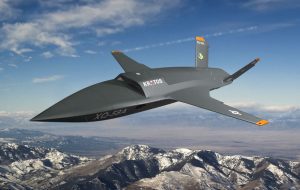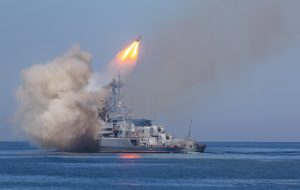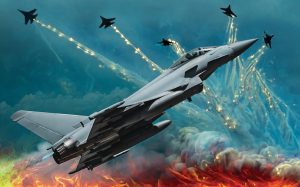Since the advent of aviation, technology has always shaped the face of aerial warfare. The advancements in precision electronics in the 1970s made warfare more deadly and decisive. The founder of aerial strategy and author of the book (Air Navigation), Italian General Giulio Douhet, stated, (He who controls the air will control the world).
Captain René Fonck, a World War I ace, emphasised the absolute superiority of aviation over all other weapons, asserting, (The fundamental factor in modern warfare is firepower, and aviation is the fastest means to deploy firepower anywhere in the world).
Air superiority became a major strategic tool for the United States following the fall of the Soviet Union, ensuring almost absolute dominance in the aerospace and outer space domains.
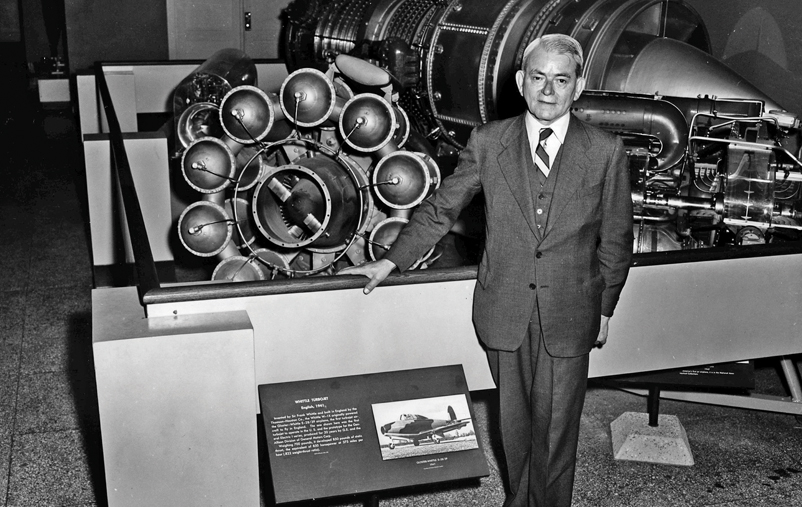
Throughout its extensive history, the U.S. Air Force has developed methods to leverage decades of technological progress to enhance air power. Despite the fundamental shift in technology, its core missions have largely remained the same, focusing on providing air and space superiority, intelligence, surveillance, reconnaissance, rapid global mobility, international deterrence, and command and control.
In the past, aircraft were viewed as a game-changer in war, and the pursuit of the next-generation technology aimed at changing the rules of the game remained crucial to maintaining the unparalleled advantage that the air forces have consistently provided to victorious nations.
Moreover, the history of the U.S. Air Force is closely tied to the history of aviation technology, with major revolutions impacting the evolution of the capabilities and systems of the Air Force, including nuclear weapons, the advent of jet engines, supersonic flight, aircraft electronics, aerial refuelling, space travel, precision weapons, electronic flight control systems, composite materials, and stealth technology.
In 1928, the Royal Air Force aviation engineer Frank Whittle predicted the possibility of achieving speeds exceeding 500 miles per hour if one could accomplish a journey in the stratosphere.
He also realised that piston-engine and propeller aircraft would never accomplish this task, necessitating an alternative propulsion system uniquely suited to those conditions.
During the 1930s, aircraft with piston engines and propellers dramatically transformed. Their shape became streamlined, their bodies entirely metallic and featured lightweight, monolithic, and retractable landing gear.
Various innovations in aircraft structure and weight reduction, as well as aerodynamic resistance, reached previously unimaginable levels.
In 1996, the then-chief of Staff of the U.S. Air Force, General Ronald R. Fogleman, presented his vision for the Air Force in the twenty-first century, which included transitioning from (air and space power on a large scale).
Fogleman stated, (I’m thinking about the core missions that have always been part of our identity. I believe that we are moving to a time when tasks will be distributed and shared across the air and space, which is why I like to use the term (aerospace), as it is a field of military power that the United States can leverage against potential future competitors).
Moreover, remotely piloted aircraft had a revolutionary impact on air force operations, especially in conducting airstrikes and surveillance in hostile environments, and air services are quickly advancing in executing more advanced tasks with high-capability unmanned aerial vehicles, and on a shorter timeline than some might expect.
Mission Stability and Execution Evolution
The fundamental missions of the United States Air Force outlined in the National Security Act have not changed. However, the manner in which these missions are carried out undergoes significant changes, depending on the available technology. It doesn’t specifically matter where the sensors or weapons come from; what matters is that the mission is executed quickly and on a wide scale.
Advancements in both kinetic and non-kinetic weapons have dispelled the notion of complete protection, as there is no haven from attacks. Assets are exposed to risks through cyber-attacks, advanced long-range strikes (e.g., supersonic missiles), and substantial increases in strategic arsenals, posing the greatest threat to the U.S. national security system.
For instance, China is working to develop nuclear and hypersonic mobile platforms carrying highly precise munitions to evade U.S. defences by 2040.
Potential adversaries heavily invest in enhancing cyber and non-kinetic capabilities, significantly expanding their reach and power. Similarly, advancements in U.S. launch capabilities eliminate havens for potential adversaries, complicating their military operations and strategies.
The Global Futures Report
The transformative progress in computing, a greater emphasis on information warfare, and stealth technology are among the factors that will shape air warfare in 2040, according to the Global Futures Report released on April 12, 2023, by the U.S. Air Force Future Force Office.
Predicting the future with precision over long periods is always challenging due to the interrelated events that occur over time. Instead, the report provides an analytical assessment of potential operating environments, raising key issues for further research through comparative analysis.
This report identifies four possible scenarios, each formed through different paths applied to emerging data and trends. The four envisioned scenarios are based on the four models for the future developed by the Hawaii Research Center for Future Studies, defining four general paths the future may follow: Sustainment (continuation of the current trajectory), Transformations (economic changes), Constrained (confronting limitations), and Collapse (failure to adapt).
By applying these paths to specific trends, the Air Force Futures magazine examined the core functions of joint forces: Firepower, Protection, Movement and Maneuverability, Information, Intelligence, Command and Control (C2), and Sustainability. As expected, these future paths vary significantly.
In a future characterised by continuous growth, the great power competition between the United States and China continues, with more proxy wars enabling both sides to develop and test new technologies, such as hypersonic, biological and chemical weapons, and even genetic modifications to enhance soldier performance.
Artificial intelligence and automation continue to advance, but ethical and political considerations may limit their use by the U.S. military. Better sensors, long-range weapons, and kill networks force planners to abandon the concept of (sanctuaries) and focus on asset and force dispersion.
In the “Constrained” scenarios, limited resources are available for biological and natural disaster crises, and widespread access denial systems make it difficult to manoeuvre armies.
Long-range precision weapons mean that air forces and other services must distribute their assets to smaller and more fortified bases, even within the United States. Advanced weapons also lead to a stalemate between great powers, resulting in more (grey zone) activities that avoid escalating the situation and leading to open conflicts, such as information warfare and major infrastructure hacking.
In the (Transformative) scenario, countries gain the ability to strike targets from space almost instantly, thanks to advances in directed energy weapons. (Safe havens) don’t exist, and countries are also developing new comprehensive weapons based on new biological and chemical discoveries.
Artificial intelligence and quantum computing have evolved to the point where humans are out of the loop, and internet speed is so fast that leaders cannot change course midway.
The Air Force has consolidated its forces into small fortified bases and increasingly relies on high-speed vertical takeoff and landing platforms enabled by advancements in energy technology.
In the (Collapse) scenario, natural and human-made crises lead to global isolationist and nationalist trends. Relatively stronger countries protect their interests directly, while weaker countries struggle to maintain order and provide basic services.
Climate change effects threaten military bases and disable ground stations controlling satellites, potentially causing collisions in low Earth orbits that create massive debris clouds and hinder space access. Technological developments spread worldwide, giving small states and non-governmental actors significant influence.
The United States experiences internal political and social divisions, withdrawing from NATO with increasing isolationism, resulting in the contraction of the Air Force and other military services with declining investment. Information warfare becomes increasingly important as communications deteriorate.
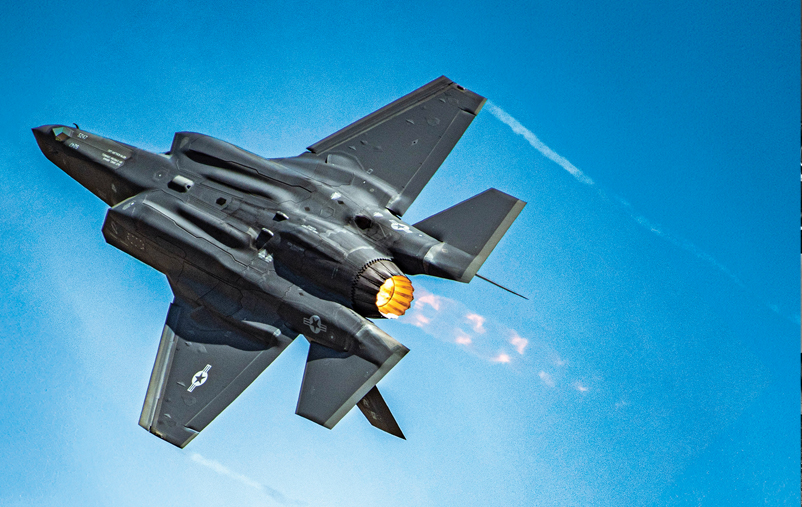
US Air Force Science and Technology Strategy 2030
The United States Air Force is actively accelerating efforts to explore new frontiers and implement various directives related to its official Science and Technology Strategy for 2030. Initially signed in 2019, the document is continuously reviewed and enhanced by Air Force weapon developers, scientists, and researchers seeking new technologies to execute the strategy.
Supported and optimized by the leadership of the United States Air Force, this strategy aims to enhance scientific focus areas to ensure air combat readiness at its highest level, considering the ongoing evolution of the global threat environment, which has become more perilous. This strategy outlines the future of one of the branches of the military that has recently changed due to technological innovations, such as the development of advanced unmanned aircraft.
In the new plan, the US Air Force highlights the technologies it will target in the coming decades. Developments will focus on adding more speed, range, flexibility, and precision to Air Force operations.
Key focus areas in the strategy involve exploring several rapidly evolving fields, such as hypersonic speed, artificial intelligence, unmanned aircraft collaboration, composite materials, stealth technologies, networks, and weapon guidance.
In the case of hypersonic missiles, a major focus area achieving tangible progress is in a field called the (boundary layer phenomena), which relates to studying the airflow around a projectile exceeding the speed of sound.
In recent years, the Air Force Research Laboratory conducted a successful experiment in collaboration with NASA called the Boundary Layer Transition Flight Experiment. This experiment helped scientists and weapon developers better understand how to help maintain the required (path) for a supersonic weapon during flight in a high-speed and turbulent environment.
Artificial intelligence is another highly important focus area in the Science and Technology Strategy 2030 concerning increasing the (reliability) of future operations.
The value of artificial intelligence is emphasized as it works alongside human decision-making processes. For example, the crucial role that human inputs can play when it comes to informing systems that support or guide artificial intelligence correctly.
As part of the efforts to expedite these ambitions and build on the progress made so far, the Air Force is intensively working on expanding its reach into academic and small business communities to conduct advanced research and assist in uncovering new or advanced technologies in future weapons.
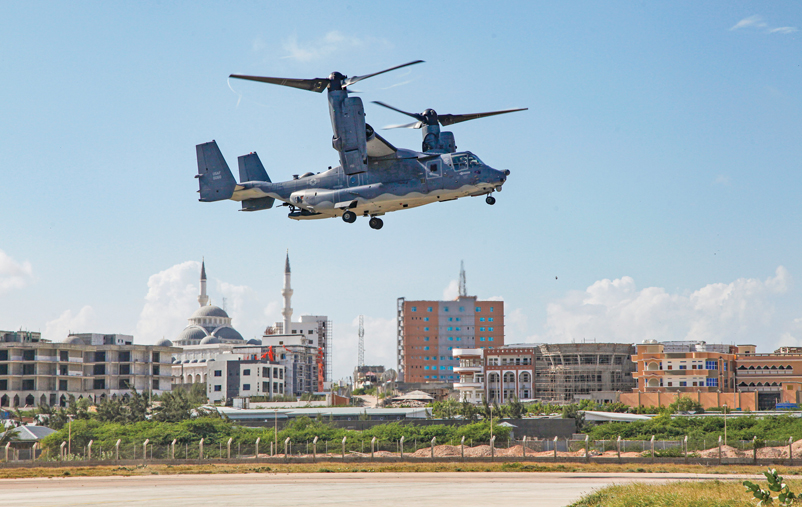
The strategy sheds light on five areas that will receive close attention over the next three decades, focusing on technological advancements that can keep the Air Force prepared for future threats and maintain the United States as a global military power. These technologies include:
Hypersonic Speed
Air Forces are naturally interested in increasing the speed of their aircraft. The ability to fly at maximum speed may not always be necessary, but it creates a significant advantage by expanding the options for movement and attack. In 2013, the Air Force tested the Boeing X-51A aircraft, reaching a speed of 5.1 Mach and covering 230 miles in six minutes, marking the longest supersonic flight to date.
Nanotechnology
Nanotechnology is expected to have direct applications in aviation and space travel. By processing materials at the molecular level, stronger and lighter structures can be created, which would boost speed and range. Miniaturized systems will also allow the Air Force to operate in new places and change how it handles tasks in highly contested environments. Researchers supported by the Air Force have designed a small patch resembling a bandage to monitor stress and fatigue levels in fighter pilots.
Directed Energy Weapons
The military has been utilizing laser-guided missiles for years, and over the next three decades, the U.S. Air Force aims to make laser beams themselves a viable weapon. Meanwhile, the U.S. Navy is actively working on a laser weapon system that uses six laser beams on a single target, according to the National Defense Magazine. Years ago, the system was installed on a warship and tested on a drone and as the laser beams converged, the drone ignited in mid-air. Mastrouani, the director of the Force Protection program in the Maneuver Exploration and Terrorism Counteraction Office of the Naval Research Bureau, told the National Defense Magazine, (In terms of force, the Navy wants flaming debris falling from the sky. That is the goal of our program).
Unmanned Aerial Vehicles (UAVs)
While unmanned aerial vehicles have found applications beyond the military, the Air Force continues to lead in UAV technology. The strategy emphasizes the need to further expand UAV technology. Beyond surveillance capabilities, the U.S. Air Force envisions UAVs actively participating in combat scenarios, acting as future fighter aircraft with the ability to mobilize, suppress, deceive, or destroy enemies. In other words, instead of just using drones for surveillance from above or launching guided missile attacks, the United States Air Force aims to possess drones capable of actively participating in close combat, essentially serving as the fighters of the future.
Autonomous Systems (Robots)
Future systems will be capable of interacting with their environment and performing tasks dependent on situational factors, integrated with other autonomous systems. The U.S. Air Force aims to use combat robots capable of making their own decisions within the next thirty years. These systems will offer increased adaptability and efficiency in a variety of mission scenarios.
» By: Retired Colonel Eng. Khaled Al-Ananzah
(Advisor and Trainer in Environmental and Occupational Safety)


